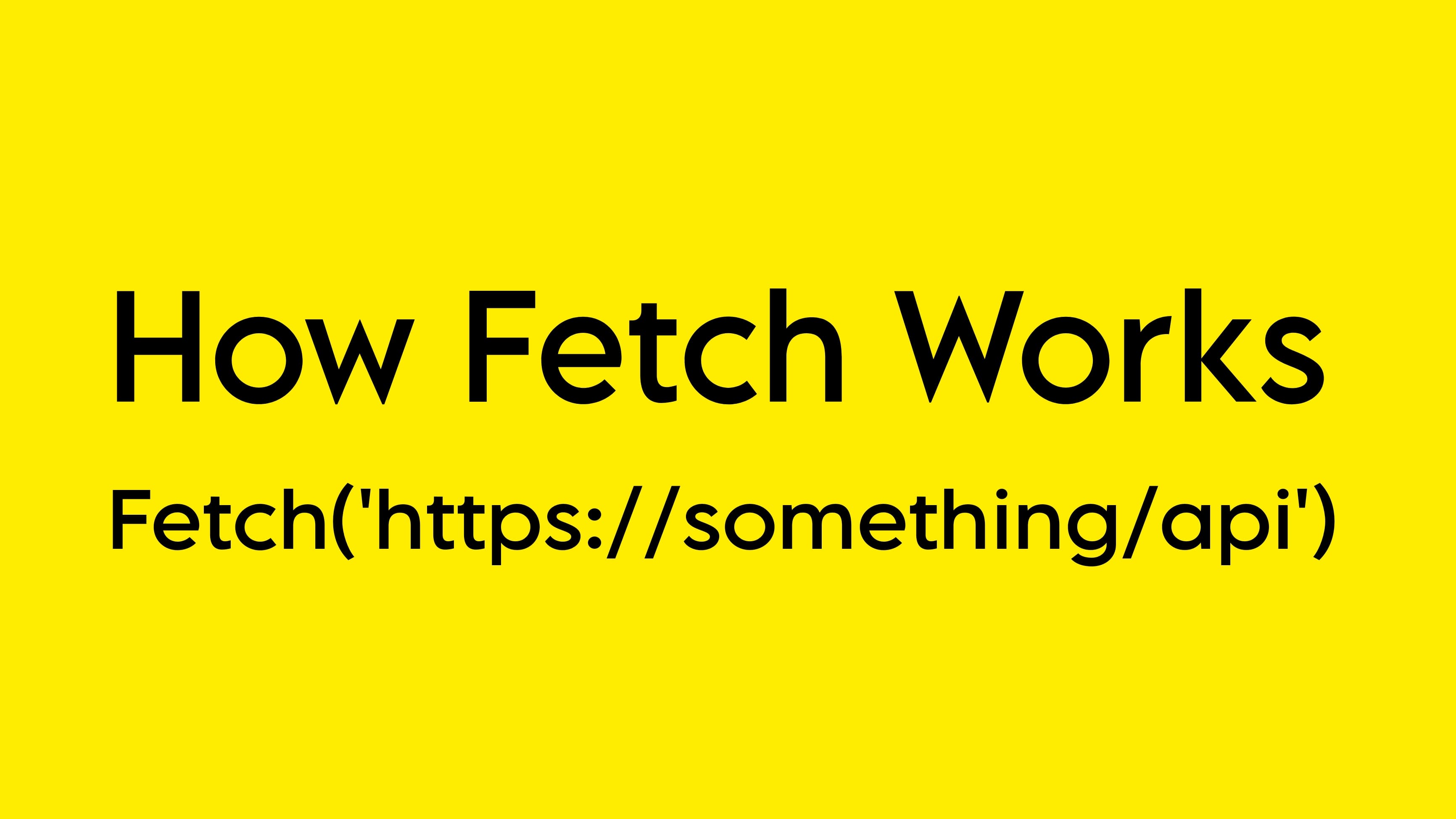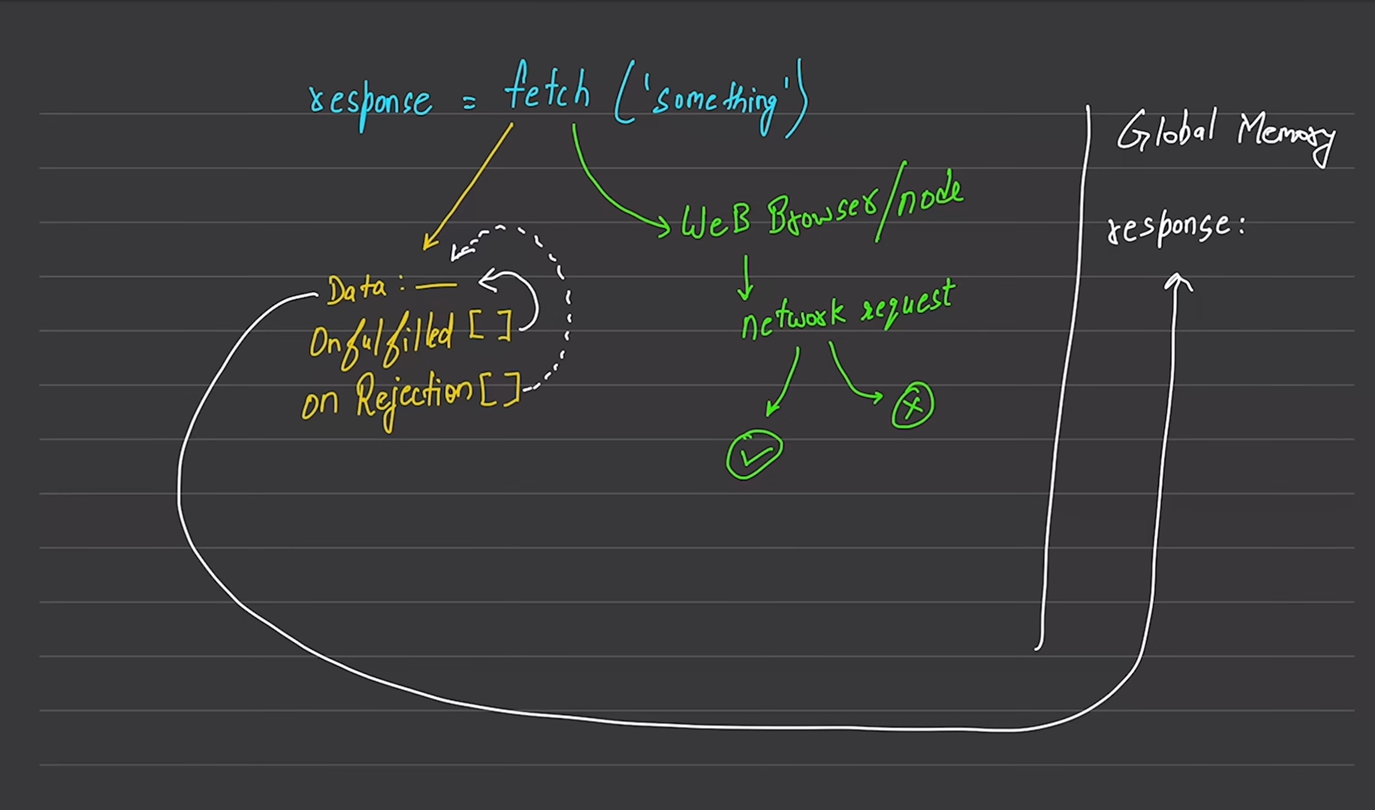Today, I Deepened My Understanding of the fetch Function
 Bhavesh Jadhav
Bhavesh Jadhav
Hey folks! Today, I delved into something that's been a part of my coding life for a while, but I never really stopped to appreciate its inner workings—the fetch function. It's a crucial tool, especially in web development, where we're constantly dealing with API requests and handling data. So, I thought, why not take a closer look and share what I learned?
How Fetch Works

The working mechanism of the fetch function has been divided into two parts. One part handles the browser or Node.js API request, and the other is responsible for reserving the data space in variables and memory.
Part 1: Data Handling
The first part is the data handling, though the actual name "Data" can be anything else. There are two arrays associated with it:
onFulfilled[]: This array handles the resolution of the promise or
resolve().onRejection[]: This array handles the rejection of the promise or
reject().
Both onFulfilled[] and onRejection[] are arrays, but we are not allowed to push values into these arrays. These are not within our range, and we cannot access them. These are private fields, and even the Data:__ is also a private field.
Part 2: Web Browser/Node.js Handling
The second part is handled by the Web Browser or Node.js environment, which manages our browser-based API or Node API. From this part, the network request is thrown. We are not able to send the network request directly; some middle resource is mandatory to send the network request. Here, the network resource is provided by the browser or the Node.js environment.
Once the network request is made, the request either goes to the network or not. If the network request reaches the network and we receive any response, even a 404 error (Not Found), the response goes to the onFulfilled[] array or resolve().
For example, if we get a 404 error, it means the request went to the network; otherwise, we wouldn't receive the 404 error. If the request is stuck and cannot reach the network, the rejection will be thrown and passed to the onRejection[] array or reject().
Final Step: Data Fulfillment
Then next, Data:__ is reserved in the memory. The value of Data:__ is initially empty or undefined. The request is fulfilled or rejected, then there is a function in the onFulfilled[] or onRejection[], and this function is responsible to fulfill the Data:__. Once the data is fulfilled, the response variable we created will be available in the global memory. So this is the responsibility of the data to fulfill the response.
Subscribe to my newsletter
Read articles from Bhavesh Jadhav directly inside your inbox. Subscribe to the newsletter, and don't miss out.
Written by

Bhavesh Jadhav
Bhavesh Jadhav
I am a passionate web developer from India, currently pursuing an MCA from Government College of Engineering, Aurangabad. With a strong foundation in HTML, CSS, JavaScript, and expertise in frameworks like React and Node.js, I create dynamic and responsive web applications. My skill set extends to backend development with PHP, MySQL, and MongoDB. I also have experience with AJAX, jQuery, and I am proficient in Python and Java. As an AI enthusiast, I enjoy leveraging AI tools and LLMs to enhance my projects. Eager to expand my horizons, I am delving into DevOps to optimize development workflows and improve deployment processes. Always keen to learn and adapt, I strive to integrate cutting-edge technologies into my work. Let's connect and explore the world of technology together!